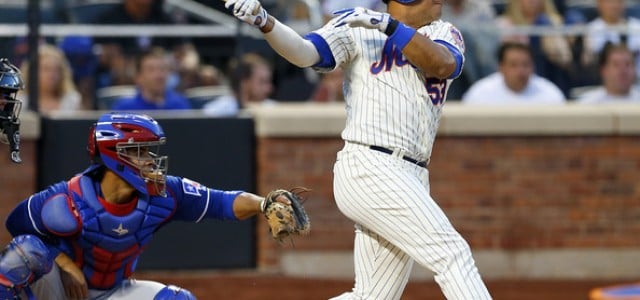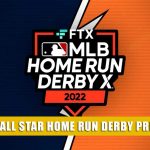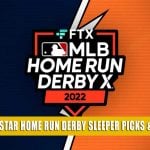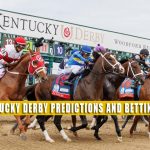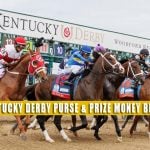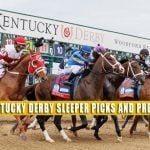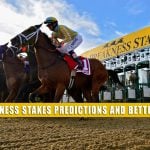It’s that time of the year again. That time when we all have to endure a blizzard of Chris Berman’s “back, back, back” regurgitations while covering the All-Star Game’s Home Run Derby, one of the most entertaining events during the season’s break.
People dig the long ball. We all love seeing large men punish one ball after another. But a number of players try to shy away because of a growing belief that participating in the exhibition can hinder their performances after the All-Star Break. But is the derby curse fact or fiction?
[sc:MultiSportArticles ]Do MLB Players Play Worse After the All-Star Game Home Run Derby?
What is the Derby Curse?
Let’s start by getting a sense of the going theory, so we can assess how valid it might be.
In the Derby, the singular objective of the player is obviously to send as many balls to the moon as he can. He doesn’t have to worry about runners in scoring position. The pitcher he’s facing is his dad or someone who is a big step-down from Aroldis Chapman. Because of these, it’s normal for players to change their stance or whatever hitting mechanics they’re used to when at the plate during a regular season game.
The Prime Examples
Which players have been affected by this contentious issue? Let’s look at the existing history of slumps after the Home Run Derby. Where did such an un-fun idea come from?
When Bobby Abreu went bonkers back in the 2005 Home Run Derby, he hit a record 41 homers in total, including a record 24 dingers in the first round. Abreu was suddenly, at least at that moment, the most powerful dude in all of baseball.
His monstrous exploits capped a promising first half of the season for Abreu. He had hit 18 home runs and put up a .526 slugging percentage (SLG). However, after the Derby, Abreu went ice cold, homering just six times to go with a .453 SLG.
[sc:MLB240banner ]Abreu isn’t the only one who’s had a mighty slump after joining the derby, but he’s arguably the most famous example. From then on, he became the poster boy of the Derby curse. In 2006, David Wright’s added his name to the list.
Wright came into the dinger contest with 20 homers and a .575 SLG. But like Abreu, after the All-Star Break, he blasted just six balls while seeing his slugging percentage fall to .469 after the break.
Here are other Derby sluggers in recent years that had also experienced a significant drop in power:
| Player (Year) | First Half SLG | Second Half SLG |
|---|---|---|
| Sammy Sosa (2002) | 0.641 | 0.536 |
| Luis Gonzalez (2001) | 0.745 | 0.620 |
| Garret Anderson (2003) | 0.597 | 0.463 |
| Albert Pujols (2009) | 0.723 | 0.582 |
| Lance Berkman (2008) | 0.653 | 0.436 |
Pretty dramatic. All five lose over a hundred points on their slugging average, with Berkman nosediving 200 points. What’s more, numerous power men skipped the event and seemed to enjoy the benefits of the choice:
| Player (Year) | First Half SLG | Second Half SLG |
|---|---|---|
| David Ortiz (2007) | 0.556 | 0.695 |
| Carlos Delgado(2008) | 0.455 | 0.606 |
| Jose Bautista (2010) | 0.543 | 0.702 |
| Jim Thome(2008) | 0.604 | 0.773 |
| Manny Ramirez (2002) | 0.518 | 0.723 |
The numbers tell a compelling story – the men who swing hard, jack a bunch of bombs for the masses, and play for the Derby crown, take the hit in the second half of the season.
Still, common sense would suggest there’s more to it than simply participating in the event.
It’s hard to believe that after all the years of complex regimens these top-tier athletes go through, a single night of talent-showcase would corrupt them of their abilities to pound the ball all by itself. The event could not possibly be the stand-alone reason why guys like Abreu and Wright instantly transform from baseball’s versions of the Incredible Hulk into baseball’s reincarnation of dead-ball era players.
As expounded by ESPN’s Jim Caple in this article:
… They have been swinging a bat and honing their strokes practically since they had umbilical cords. They take batting practice every day, usually multiple sessions per day….Yet we’re supposed to believe that one night of the Home Run Derby will send them into a funk that lasts the rest of the season?
Perhaps the Derby is only a mere instrument that highlights (in hindsight) a player’s imminent power outage, a convenient bookmark that helps trace where a hitter’s decline power began.
Other Factors
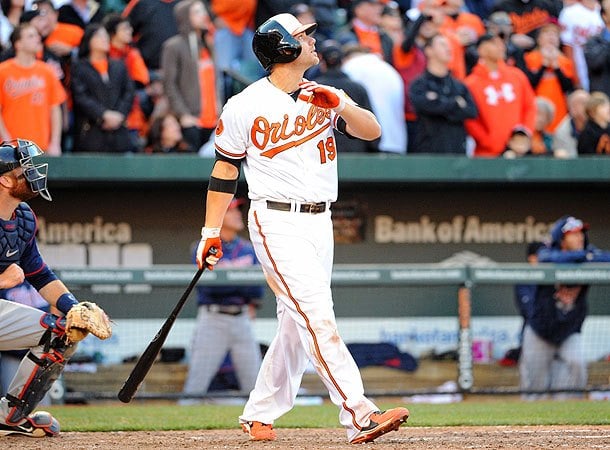
Since blaming the derby won’t stand on its own, here are other possible supporting explanations why players in the event tend to peter out afterwards.
Selection Bias. The derby committee of course invites players who have been explosive in the first half. Some of these players’ performances can be viewed as aberrations when juxtaposed with their career numbers, however. To the knowledgeable fan, the second half lull of a player simply means that his numbers are abiding by the law of averages.
Take for example Chris Davis. Last season, Davis was a man possessed before the All-Star break, knocking 37 homers to go with a .717 SLG (!) at the conclusion of the first half. Then he joined the Derby, which he lost, before resuming his assault of Roger Maris’ un-asterisked single season home run record.
His second half numbers, however, were nowhere near those he put up prior to the Derby, as he only hit 16 dingers and his slugging percentage slid down to .515. While it’s easy to blame the Derby for the regression, it doesn’t come as much of a surprise that Davis suffered such drop in numbers when you look at his previous seasons’ stats: since arriving in the big leagues in 2008, Davis hit 21 home runs in a season just twice.
Number of Games. We call it the All-Star Break, which means that the season has reached its halfway mark. However, the terms “first half” and “second half” are, in essence, misnomers. Usually, there are more games played in the first half than the other. In the case of Davis, he crushed those 37 bombs in 95 games, while the other 16 homers were done in just 65 outings.
The Verdict
There’s compelling evidence both ways. It may be that some players do throw off their swing, or that the pressure of the event gets in their head and sets off psychological processes that affect them when they step in in late summer. Still, the numbers aren’t conclusive, and other explanations weaken the arguments of those who would say the Derby is a bad idea for all batters. It’s enough to give a player pause before agreeing to enter the event, but perhaps for the importance of getting an extra day without swinging a bat as much as anything else.
You can swing for the fences yourself when you create a betting account cash in with bets on all the big events at the upcoming MLB All-Star break.
[sc:MLB490banner ]3,154 total views, 1 views today

